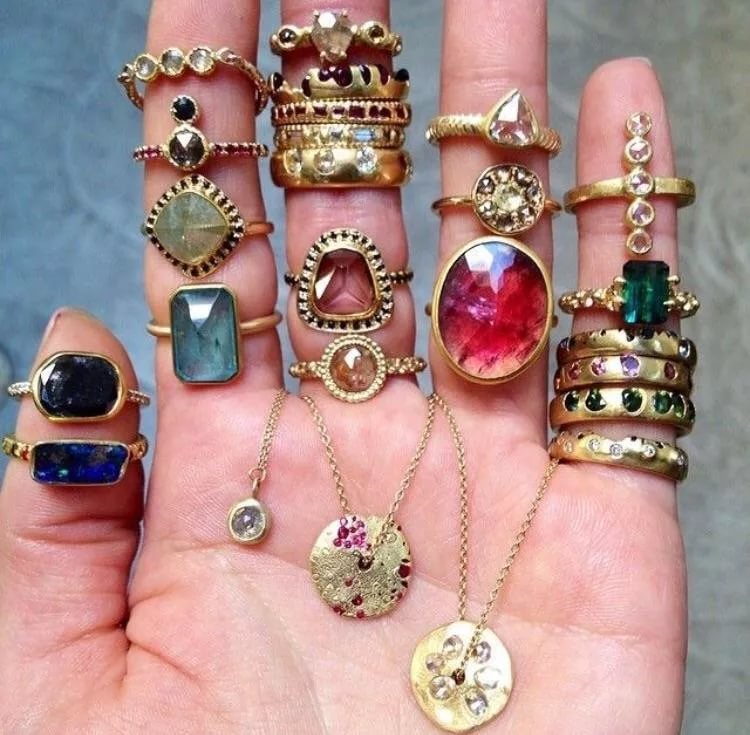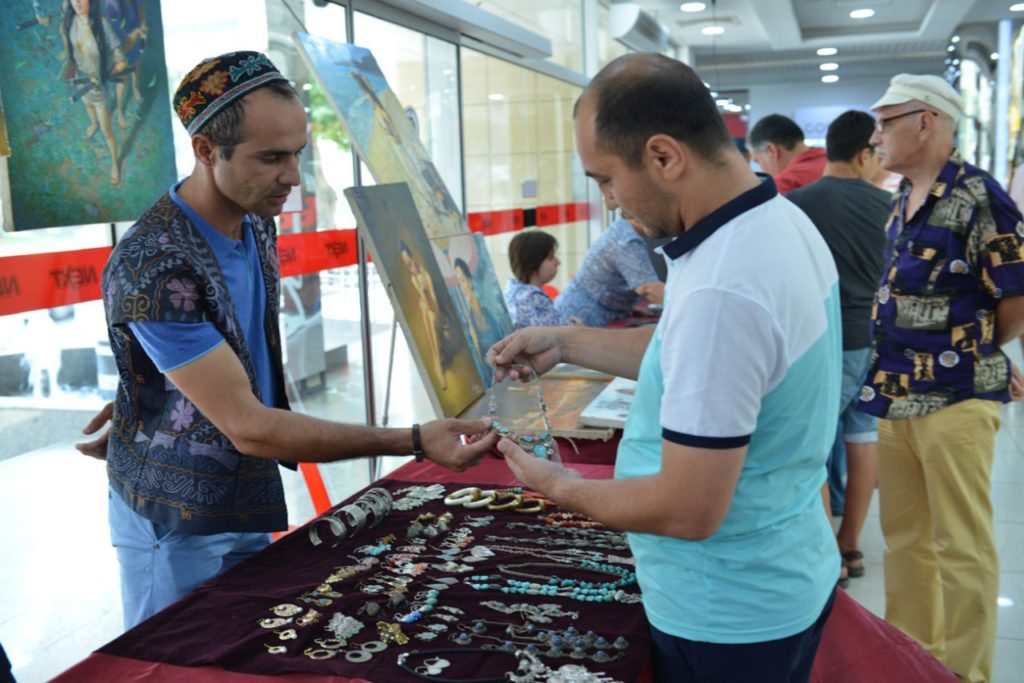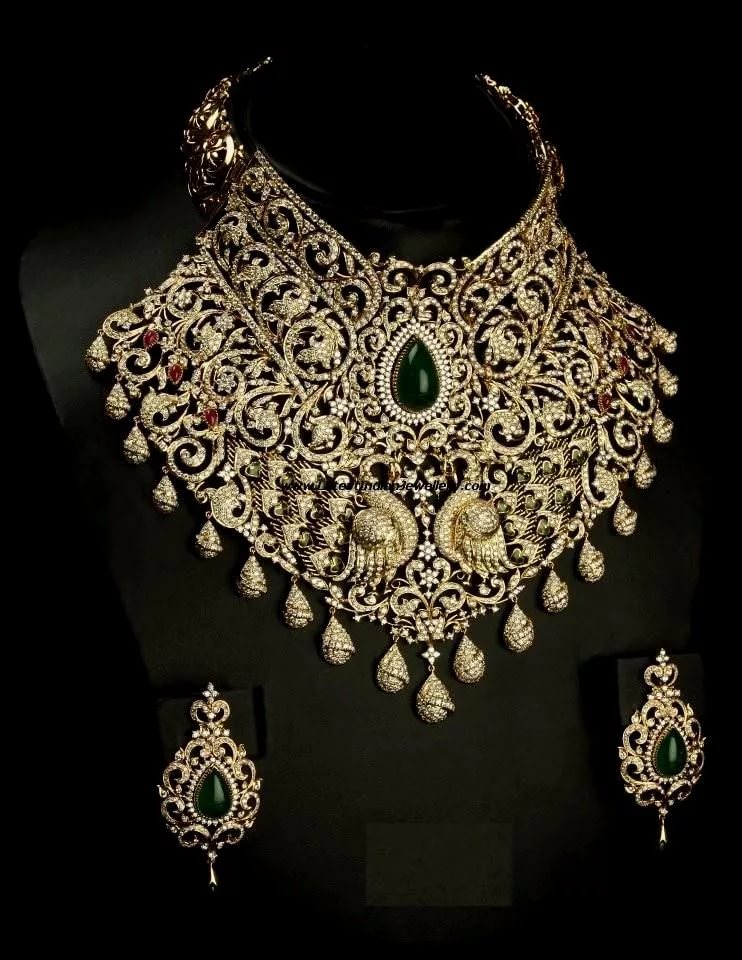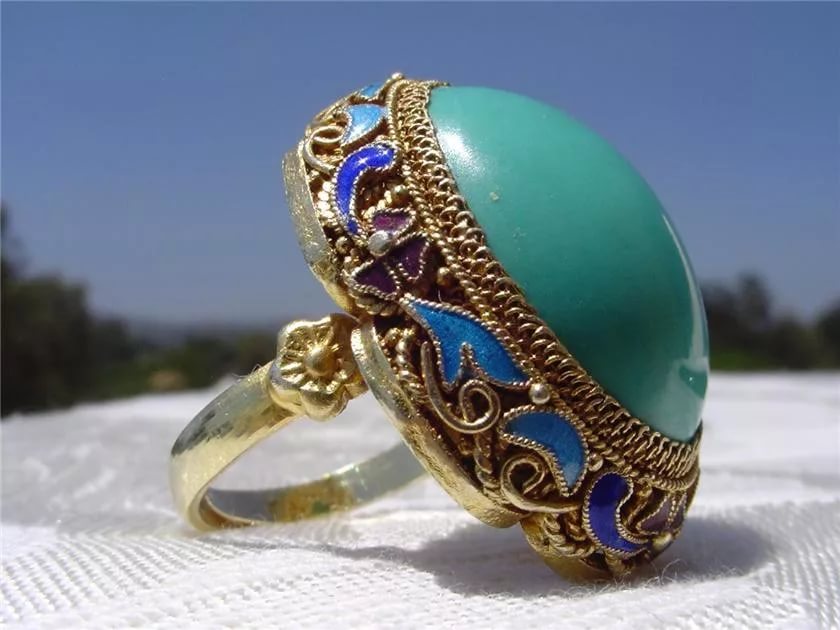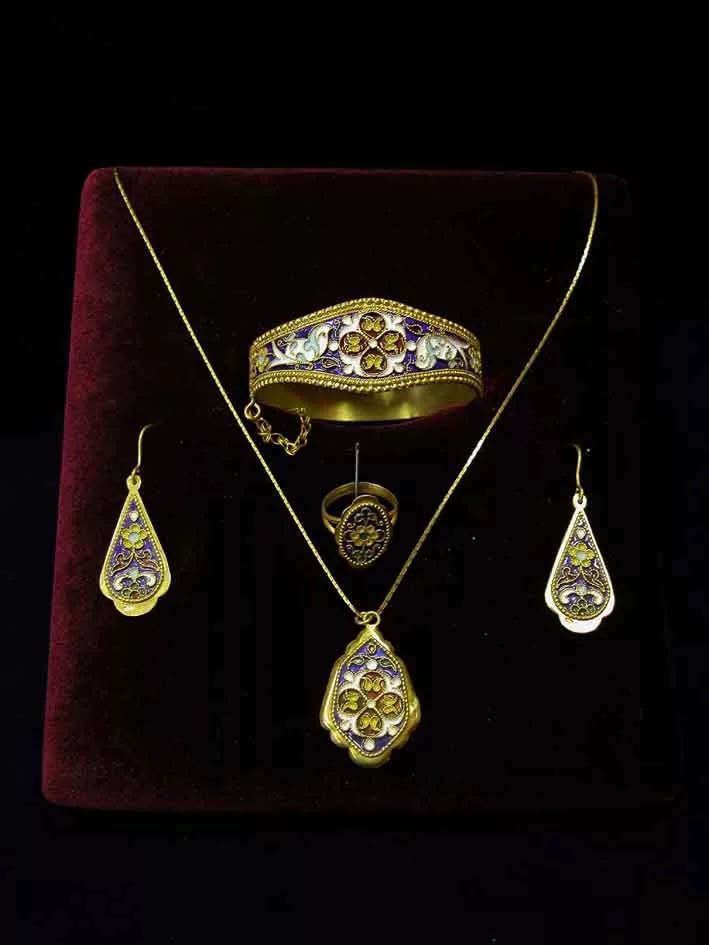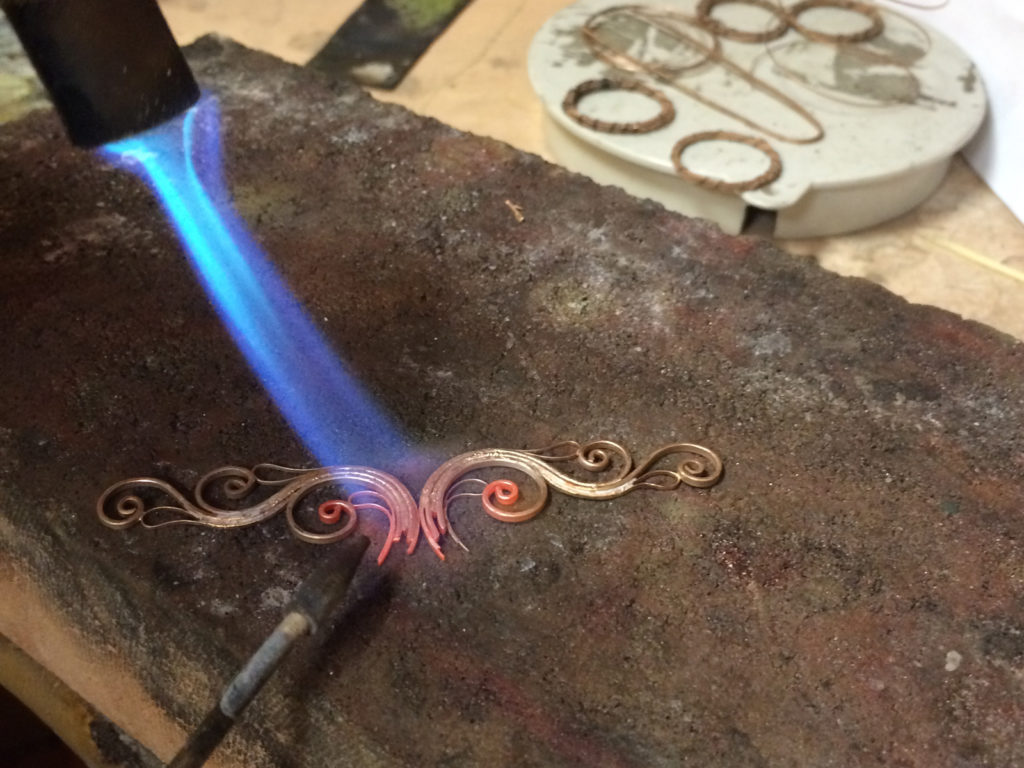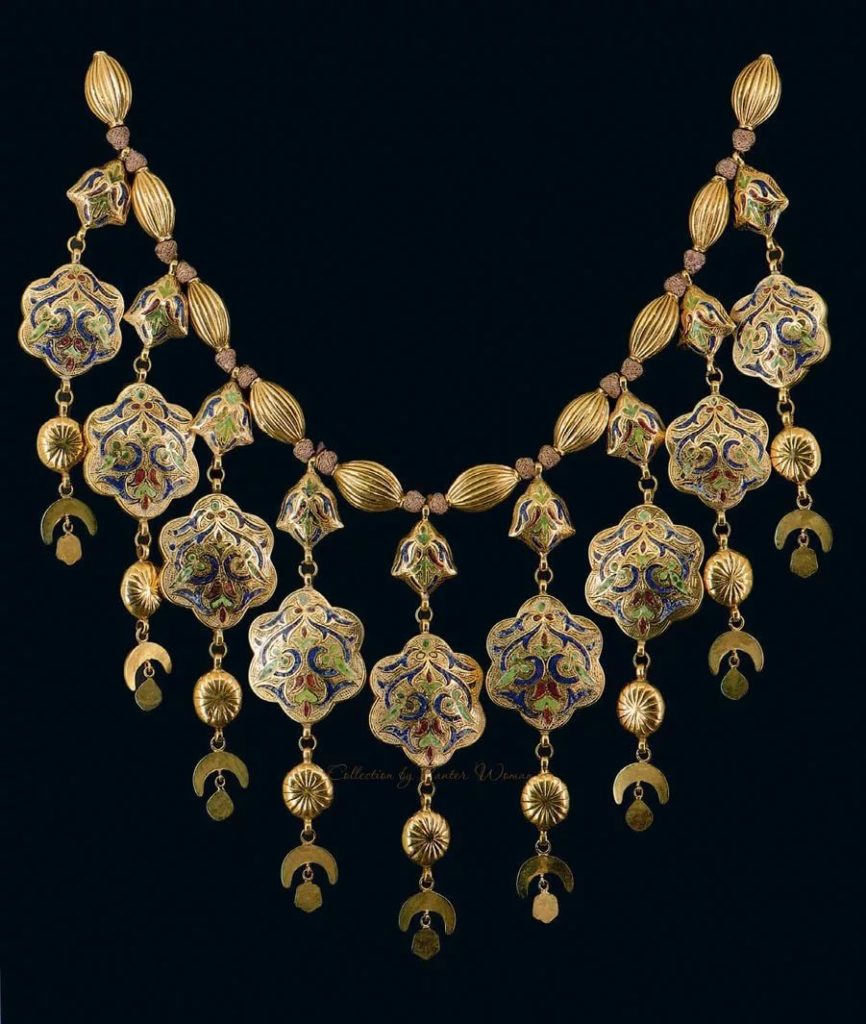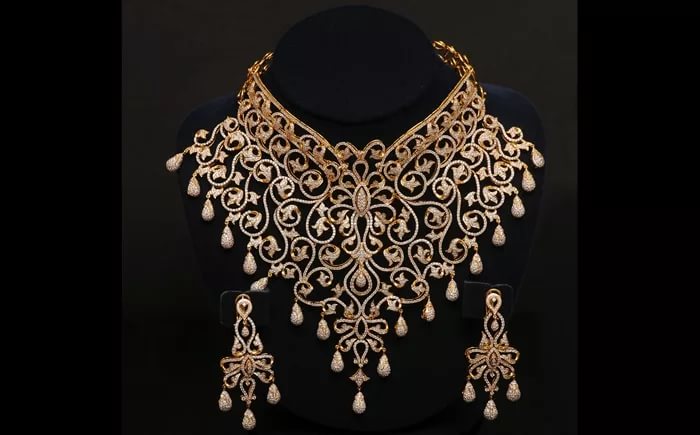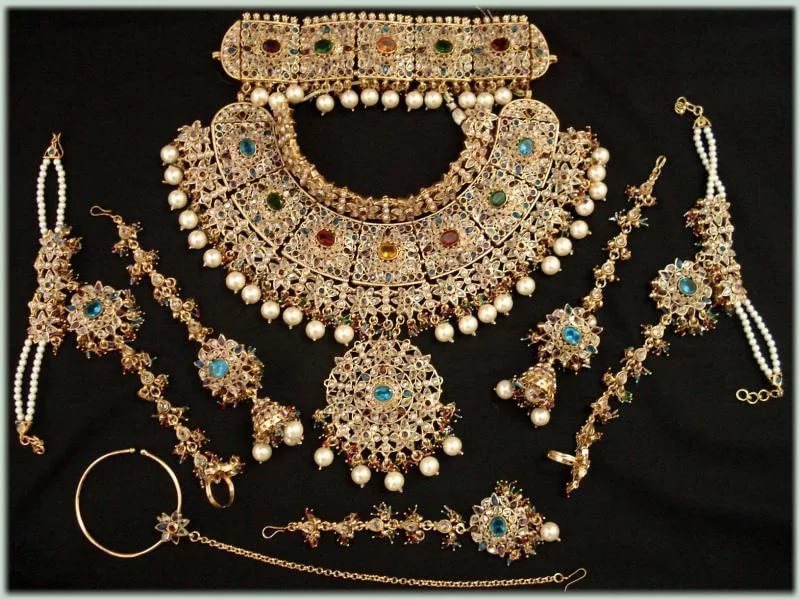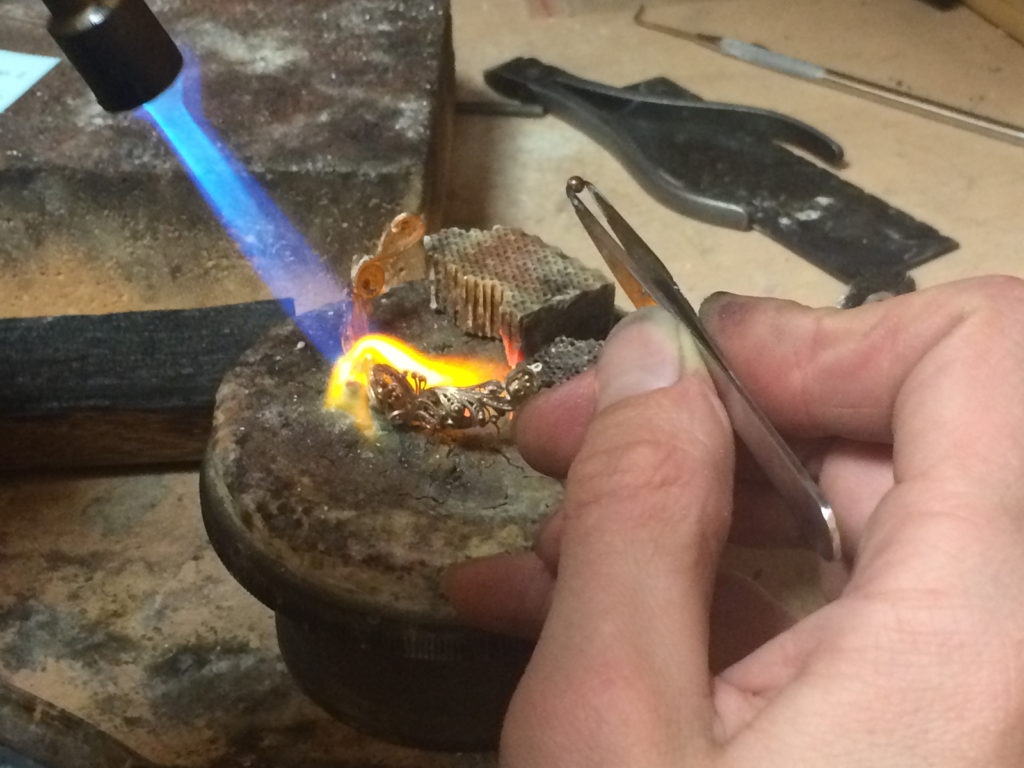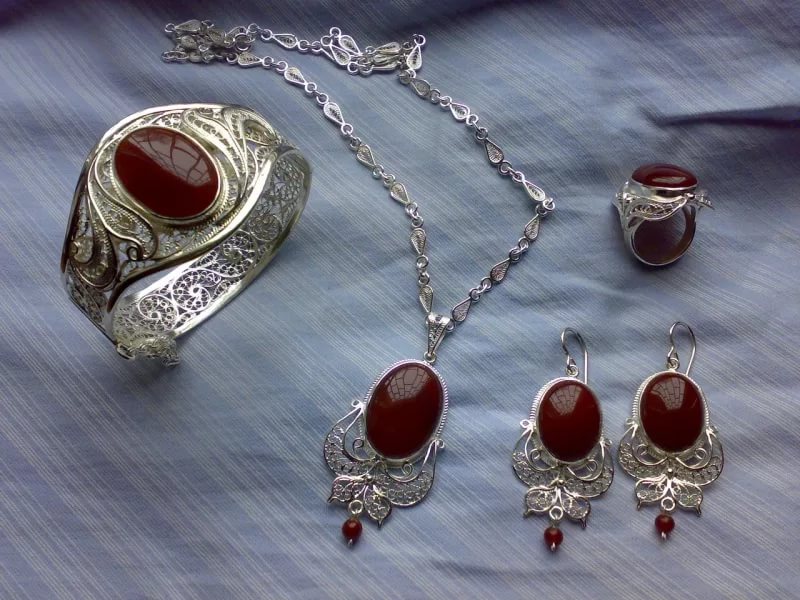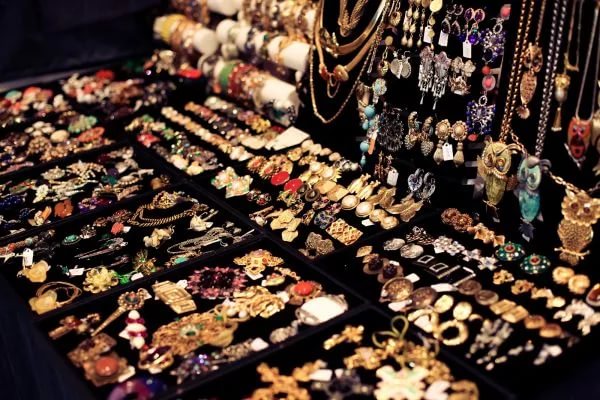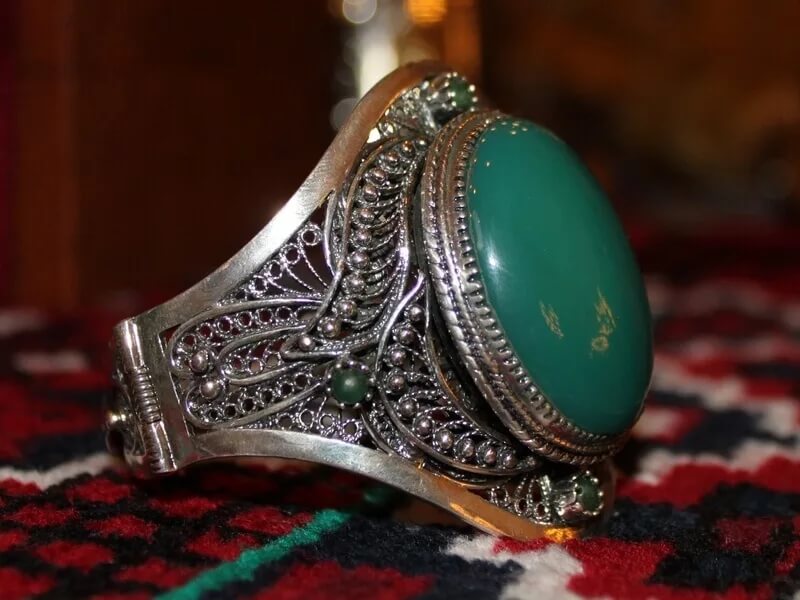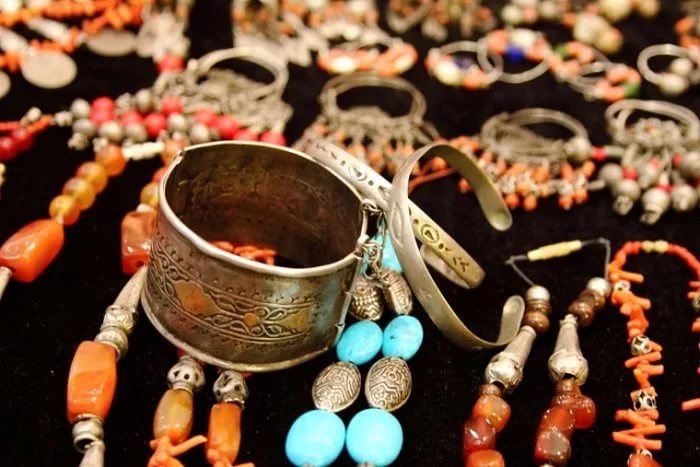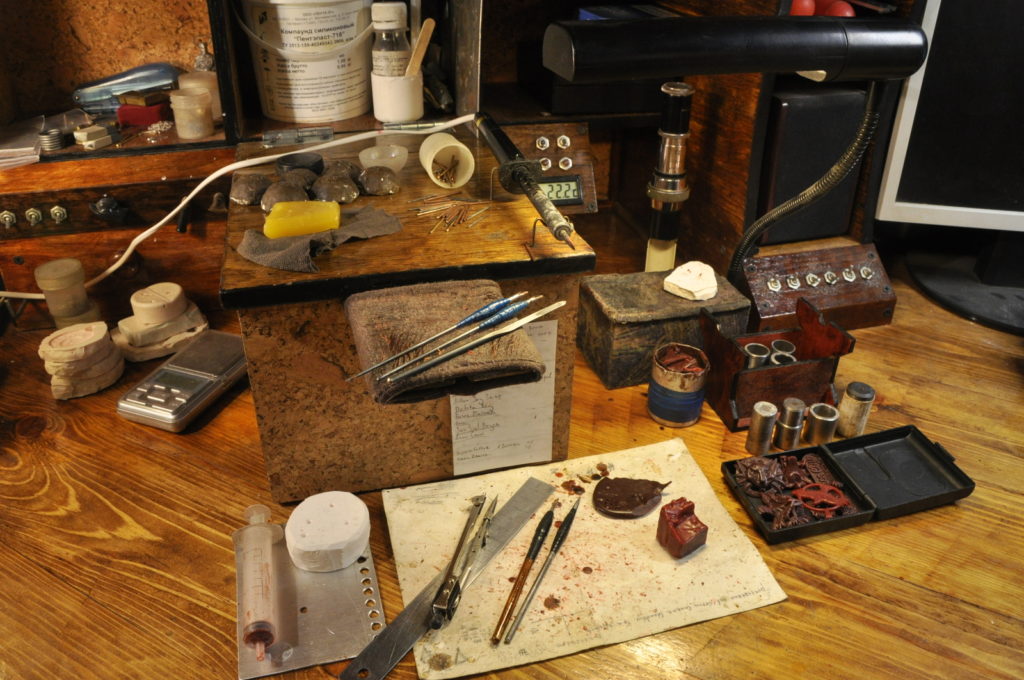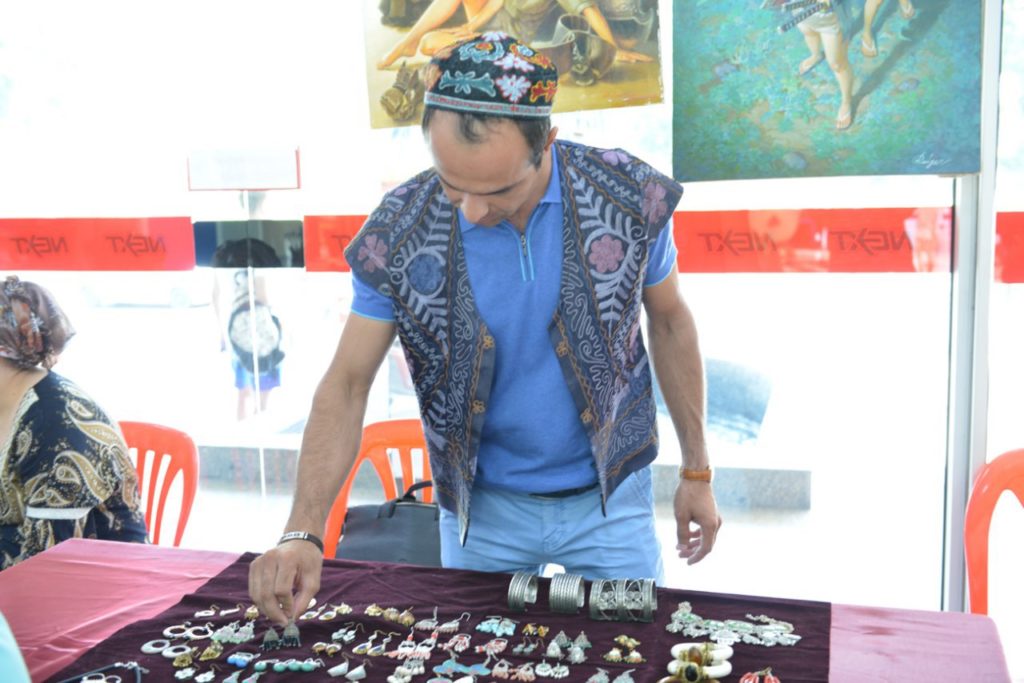In the article used pictures of jewelry created by Izzatillo Khabibov
Izzatillo Khabibov is an outstanding master and a faithful follower of the ancient traditions of jewelry art of the East. His works are beautiful, original, unique and professionally. He was awarded a number of prizes and diplomas of international competitions. Izzatillo Khabibov is actively engaged in the revival of the ancient art of the east and the popularization of the traditions of Bukhara’s jewelry art abroad. Works of the master exhibited at many exhibitions and are popular with connoisseurs of oriental art.
Let’s first listen the story the artist, and then go into an amazing centuries-old history of jewelry of Bukhara – the pearl of the East
Artist’s story
From my early childhood I was fond of drawing. Later it turned into the deep love of describing the national ornaments and patterns. Soon i started to visit my uncle’s jewelry workshop. The art of jewelry kept on amazing me. Noticing my strong inclination to learn art of jewelry, my parents decided to send me to skillful masters. Since 2003 i started being an apprentice of famous jeweler of Bukhara master “usto” (means master) safo and his two brothers. The education was in two directions – one is national Bukhara style and the second is European style. I was involved in every detail of this work, such as ornaments, patterns, new models, different stones, alloys of different metals and various tools with the help of which the masterpieces were created. Later my father helped me to organize a workshop, equipped with all necessary things. I would spend all my day there being inspired to create something original. During a year, I learned a lot and started to work independently. My first work was for my mom who was delighted by the earring i made for her. Consequently, I was inspired and motivated by my mother’s appreciation and I started to try to create something new.
For my works I use gold, silver, German silver and alloys of these metals. I buy them in the local markets or people themselves bring the material when they order any kind of jewelry.
Materials I use to make jewelry pieces are: gold and silver wires, precious and semi-precious stones like: ruby, sapphire, pearls, aquamarine, corals, turquoise, cornelian, diamond.
All kinds of stones for jewelry industry come from south-eastern countries like India, Thailand, Bangladesh, Iran and other countries.
Mostly used to create the product are: microscope, roller, scissors, pincers, moulds, propane/methane burner to solder the pieces of jewelry items, set of different files to process the metal, micrometer to measure the thickness of product, kinds of round-nose pliers to create patterns, different type of knives, tweezers to hold the pieces of the product after soldering, the device to place the stones, diamond drill to process the product, different kind of clamps used while soldering, crucible to melt alloy, polishing machine to polish the product, different type of hammers to create forms, tools to twist metal threads together, fillet used flatten different patterns from plates, galvanic solutions to gild the silver and gold with pure gold, solution of sulfuric acid to clean the surface of metal and make it shiny.
In the beginning we (I and my apprentices) sit together with a cup of tea and discuss about the main idea of jewelry item we are going to make. We draw a design and talk about material and precious and semi-precious stones for decoration.
The jewelry departments of local museums and recently published books of Uzbek artists about traditional jewelry are also good sources for new ideas. We learn all traditional ancient designs and use them in our work. These designs inspire us to make new items.
We work in traditional way. For this process gold or silver is needed and alloys are prepared from various kinds of metals. It is poured in the form of bar and this bar is stretched out in the form of wire through the machine with holes up to the thickness of 110 micron. Then this wire is stretched out through another type of holes making the thickness of 28 micron. After that, two threads are twisted together in one and pressed using a specific machine. This is a way how filigree threads are made.
The whole process is done by hand. I and my helpers do the pieces by ourselves. My apprentices are responsible for initial stages like preparations of parts of jewelry items. They work with gold and silver threads, twist them together and hand them to me. I do the most delicate parts of work like putting stones and finish them. The last part which is polishing is done by my apprentices as well.
Filigree has been one of the most well-known and widely spread in central Asia, especially in Bukhara city.
The history of filigree is very deep. The first archaeological finds connected with filigree have been made on the territory of Persia (Mesopotamia) about 5-6 thousand years ago.
Some filigree findings on territory of central Asia prove that local Bukhara jewelers were influenced by the Greeks who settled here in 3 century b.c. In time of alexander the great invasions.
It has already been almost 500 years since filigree jewelry became popular in Bukhara.
Many jewelers in Bukhara city acquired this art from their parents and grandparents. Jewelry making can be considered as a family craft and all technological secrets pass from generation to generation inside the family or guild.
As for me, I learned this art from my uncle from my mother’s side. My apprentices are also my relatives. One of them is my nephew. I can tell that they will continue our family craft.
Bukhara – the pearl of the East
The XIX century in Bukhara was marked by the hectored of art crafts – the coinage and production of jewelry, weaving, embroidery and gold sewing, threads and paintings on wood and gun … Bukhara becomes the largest school of crafts, having a significant impact on the work of masters of other cities and villages. The art of cities of the Muslim East, which the belonging of the Bukhara Emirate was also rented, over the centuries, united a single style, developed by Islamic ideas about beauty, gravitating to the limiting anesthetization of the form, the outskinity of lines, which was characteristic of jewelry ornaments. Their style was different by the fraction of the form, an abundance of suspensions, free connections that give the article air, ease, use of the filiers, openwork and grains, semiprecious stones – amethysts, beryllias, tourmalines, corals.
The production of jewelry ornaments in Bukhara was given special attention, it reflected the traction of society to luxury and wealth; In the central market of the city of Jewelers, a special place was held – the currents of Zargaron – a dome of jewelers. It is known that in the XIX century. In the city was up to 400 jewelers (1, p. 194). The craft was carried out by Uzbeks and Tajiks, Indians and Persians. Indians, for example, belonged to small workshops on the grinding and granignment of precious stones (1, p. 176).
Thanks to the Caucasian jewelers, the cherry (2, p. 237) was popular. In general, the jewelry of the Bukhara was, as noted by D.Fachthendov, “a complex syncretic phenomenon, in which the teddy-free Uzbek and the ancient traditions merged, which was given to other peoples” (3, p. 72). However, one can not not be noticed that borrowed forms were largely immediately established under the influence of local fashion; In the polyethate city, which was Bukhara, a single complex of decorations was formed, which reflected the characteristic features of the city fashion, regardless of its ethnic characteristics. The traditional Bukhara jewelry includes the head decorations of Tilla-Kosh (the crucian bride), the tasty suspensions of Moititol (Bibishak) and Kadjack, the breastfeeding zebi-Gardan and the nose-gardan, the leggings of the bargoer type, the kundalplas, the halinka, etc., bracelets decorated with a sliding lake-shaped in the style of Islam, the belt to the know with large silver buckles, etc. Many of these types of decorations were made in other cities, for example, Zebi-Gardan and Tilly-Kosh. The breastfeeding zebi-Gardan are complex complexes consisting of a central large saline-saline and extra small rectangular medallions connected by a laundry chain walking in several rows. They decorated with enamel, semi precious stones or color glass, filigree, numerous suspensions. Similar decorations are known in Tashkent, Samarkand and other large cities.
Heads of Tilly-Kos, whose form is probably associated with the Indian tradition, were popular both among the Uzbek and the Tajik population, they were also similar to Samarkand, Tashkent and Cocklands. The investigative interest of researchers of jewelry art has always caused the problem of formal semantics, the specifics of which is that even late in the time of manufacturing of shape is often associated with archaic, cult, mainly the astral representations of the disposable-agricultural environment, or totemic representations of degrees, so ancient that the meaning of them is long forgotten. Analysis of the form and searching Analogies allow the restoration of their genesis. For example, “saccha” is a fragment of the Bukhara head pin (at the bottom of the crescent, from above the star; in Khorezm, its option is known as “Bodom-oi”, the imputable temple decoration) – is associated with astral symbols (the motives of the sun (stars) and the moon), the former popular in both the art of the disposed-agricultural and the nomadic population.
Symbols of the Sun and Crescent are popular in many oriental peoples and are associated with one of the oldest astrolucues – worshiping the Sun and the Moon. The moon was binded to the female beginning, and the sun is with male (4, p. 35). The sun is the High Demy, the great fertilizing force, with his way, at all times the idea of life was generally associated. The crescent in turn symbolized the beginning of a new life cycle. The image of the crescent is generally provided for a well-fond of development of life, and the sun is the patronage of life itself. Two characters near the sticky and the continuity of the life process and probably reflected the idea of an equinox, associated with the beginning of the New Year for the Eastern Calendar – the holiday of Navruz. In general, the symbols of the decorations of this kind are associated with the idea of fertility, involvement in the living-performed pieces of nature.
Astralic was the most affordable in Bukhara, in which before Zhoarastinism, the worship of celestial lights, in particular the Luna-MOC; At one time, the first urban mosque of Magoka Atari was erected on the place of the moon of the moon. Another evidence of the durability of the astral cult is the name of the country’s residence of the Bukhara Emir – the Cyorio of Moha Hosa – the house of the moon and the star. The popular bukhara jewelry includes Bibishak – decoration reminding of crescent with high-end bending ends, and above it – a motive of a flower bud. It was worn on the forehead (unit option) or near the ears (pair).
There are other names of Bibishak – “Mochi-Tillo” (Golden Moon), “AT-Tugei” (horse hoof). D.Fachtheldinov conducts an analysis of semantics and offers several options for interpretting this decoration, among which are attributes of the fruitful mother-goddess – a pair of image of birds, a crescent and a splashing bud; Or “the Rog of Mother” (the following translation): horny headgear, which were worn by women and were a symbol of fertility. Judging by the form (star and crescent), the symbolism of this article also goes back to the solar cult. At the same time, the Turkic version of the name “at-Tuega” makes it possible to look for analogues of this form in the Turkic environment. In the art of Kazakhs and Kirghiz, it is characteristic for the Ayak Capa (the handbag for the cup, which was rich people) and kyigurov (leather vessels for the Kumus).
Over time, it is obvious that this form lost its original semantics and became associated with abundance, wealth, which predetermined her wide spread in jewelry art. The identity indicates that although Bukhara jewelry was samples of typical urban taste, a significant influence on the entire complex of products was by a nomadic steppe. So, under the influence of the nomadic tradition, numerous amumes (rug) was the urban environment, originally designed to play not only decorative, but also (first), a guardian role in the scale of the amulet was inserted with the written words of prayer. In the performance of urban masters, the tumra are significantly transformed – to change the massive, closed forms typical of steppe aesthetics, literal structures decorated with the pattern in the style of Islam, cognate inscriptions, as well as purely decorative tumors, made in the equipment of the open filina, light and air. Among the Bukhara jewelry, you can meet the analogues of the Turkmen ash, for example, a female silver occipital ornament, usually the size of the palm, which is on the back, between the bones. According to folk views, Asyk plays the role of adverut, protecting a young woman who is a child. According to the form, Asyk resembles the heart and therefore considered a symbol of faithful love.
However, this form is an ancient prototype: Ashyki are genetically associated with female terracotta figurines with a narrow torso and wide hips common in Margián in 3 to 2 thousand. BC. In the center of the anthropomorphic form of Asyka – inlay with a cold-cord, a kind of symbol of the accumulated and failed fetus. In general, the semantics of the decoration is associated with the idea of fertility. Asyki gave the bride to the wedding, they would have reinforced and protect her reproductive function. The popularity of this decoration leads it to the city environment. However, the transformation of the Bukhara variant is significant: this is not a deaf, closed, massive form that is wearing on the backhoe, and a chest pendant in the engineering of the vestment, with the addition of motives of Islam on the edges of the “female” figure. Numerous examples of borrowing, which occur as a result of long-term contacts and joint residence of urban and steppe peoples are quite explainable.
Trade relations bound the Bukhara Emirate with the nomadic steppe.  Welding of Bukhara artisans used in nomads specially. In turn, the wool and felt products that made nomads-Kazakhs were popular in the Bukhara: clothes, carpets for storing homemade scarab, etc. With migrants, the solely ideas of their bombing, well-known energies, which they became popular and in an inoculation, but ethnically close environment, undergoing a noticeable change in style and shape under the influence of aesthetic canons of the host urban environment. The decor of the Bukhara bracelets is interesting to be later in origin and appeared already during the heyday of Islamic art. In its basis, the openwork through the carving in the style of Islam. Semantics of similar patterns are known – they are called upon to convey the idea of the ideal, beautiful world, the premium garden created by God. However, it is unlikely that the master-jewelry put into any value in these patterns, for them Islam – traditional decoration of the decoration, popular in many kinds of artistic crafts.
Thus, the analysis of the semantics of a series of Bukhara jewelry is connected with the pre-Olamic representations, which indicates the ancient times and traditions of their forms. They are long, for many centuries, the household led to the loss of the laid sense, the predominance of the decorative side. However, the resistance of forms makes it possible to identify the meaning that was originally inherent in this wonderful works of art.

